It opened in 1876 and was intended to be a skating rink. It was described as being “the largest covered rink in the country, but will also be one of the finest buildings for concerts, outside of London”.
- Designed by John Breedon Everard, the resident engineer for the build of the former Midland Grand Hotel at London St Pancras
- The last surviving Victorian Turkish bath in Leicester and a Grade II listed building
- In 1960 it became home to the Leicester Law Society’s library
A piece of hidden heritage
There is not much research available on Turkish baths, although we do know that they were once very fashionable with more than 600 in Britain. The man responsible for this was David Urquhart, a British diplomat who had been inspired after his posting in Istanbul.
Urquhart persuaded foreign affairs committees in Britain to open Turkish baths, not only to provide cleansing facilities for working-class people without easy access to running water, but also to support committee members financially. Interestingly, the baths were not intrinsically Turkish, but a humid, watered down version of the ancient Roman thermae.
In the early days most proprietors started their Turkish baths without any previous experience. They saw what they perceived as a good opportunity and hoped that there was a living to be made. The committees also saw the value of using their bath premises as a meeting-place, providing an alcohol-free environment where the men, and on separate occasions their wives, could meet in the equivalent of the leisured gentleman’s club.
Most of the early Turkish baths were, therefore, commercial establishments. While publicly financed baths were not permitted to charge more than 2d for a second-class vapour bath, no commercial bath could make a profit at that price. As a result, Turkish baths were rarely built in the poorer areas where they were most needed, and this bath was most likely used by the middle classes.
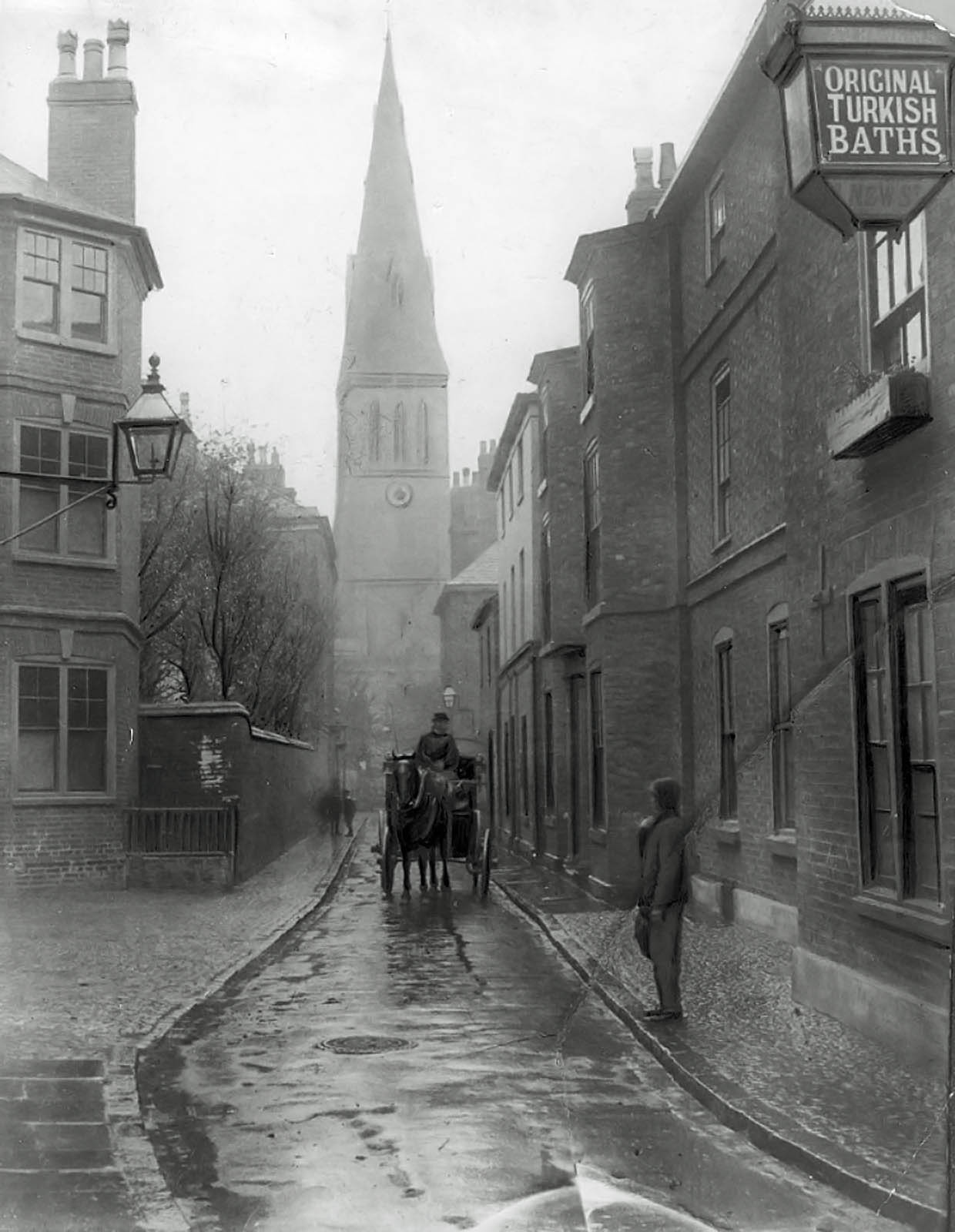
A tale of two Turkish baths
There were two Victorian Turkish baths in the centre of Leicester during the late 1800’s, the one surviving at 40 Friar Lane and the other being at 9 New Street around the corner. They were built during Leicester's most successful years, when a commercial transformation was occurring, and people were moving from the country to the city. The area at the time was made up of mainly lawyers, bankers and architects. Additionally, the St Martin’s School, a Dominican Convent and two public houses were located within one hundred metres of the baths at Friar Lane and provide us with a picture of a lively mixed residential neighbourhood.
The baths at 40 Friar Lane were the second establishment to open in Leicester and were owned by several proprietors in turn until they closed sometime around 1903. However, by 1908 they re-opened with new proprietors, Hardington & Elliott, who kept them open until just after the end of World War I. The New Street baths closed for good in 1904.
Built in style
The Turkish baths on Friar Lane were opened in 1872 and designed by the architect John Breedon Everard. It is obvious that this design was inspired by his work in London, as the materials and techniques are the same. The cooling rooms are the best-preserved part of the building and could be described as a work of art in their own right and are an excellent example of vernacular traditions and crafts. The octagonal roofed hall of the cooling rooms is in a Venetian gothic style, with brick arches, a polychromatic brick ceiling and ornately carved capitals with unique designs.
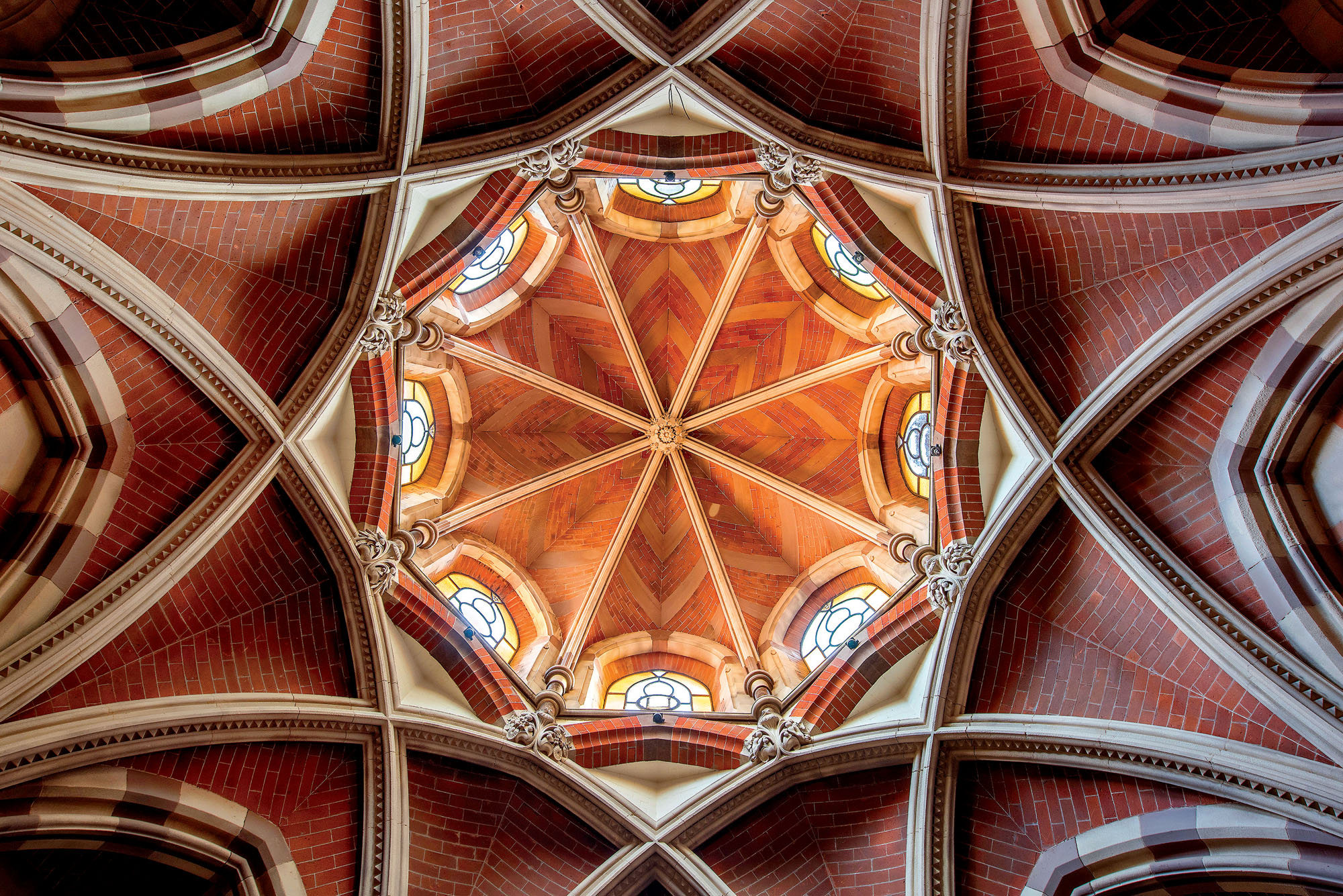
Moving with the times
By the late part of the 19th century, additional space had to be found for new industrial uses which led to the rebuilding of much of Leicester’s town centre. This led to the loss of the area's residential character as the wealthier families abandoned their homes for the newly fashionable suburbs. The Turkish baths struggled to operate in the early 20th century due to a reduction in the local population as well as an increase in the availability of personal bathrooms in homes.
Only half of the original building survives; the north of the site holds the same footprint, but the south of the site has been altered dramatically. The demolition of the hot rooms at the south of the Turkish Baths was to make way for a factory building which still exists today. The cooling rooms probably survived due to their unique aesthetic.
Despite being adapted for different uses the frontage is intact but the first section of the building has been insensitively modernised. The site has been in the ownership of the Stockbroker’s firm, Thomas Grant Ltd., since 1999. Previous uses include Aldridge & Co. Printers which opened in 1919 and the Leicester Law Society library from 1960.
The Turkish baths are an example of a building that is not generally open to the public but has a local and even national significance.
Special thanks to Malcolm Shifrin's 'Victorian Turkish Bath Project’, find out more about the project.
Gallery
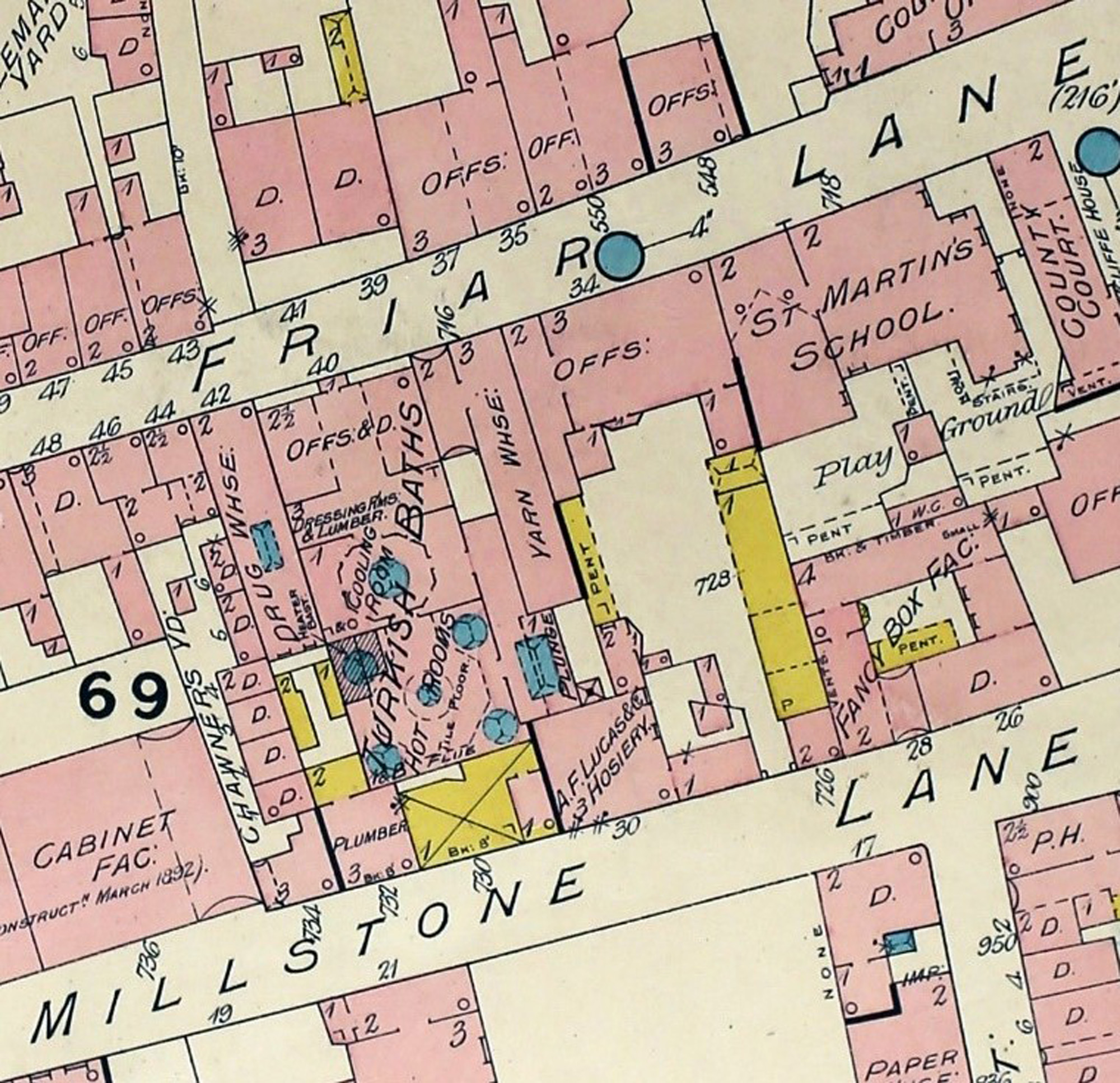
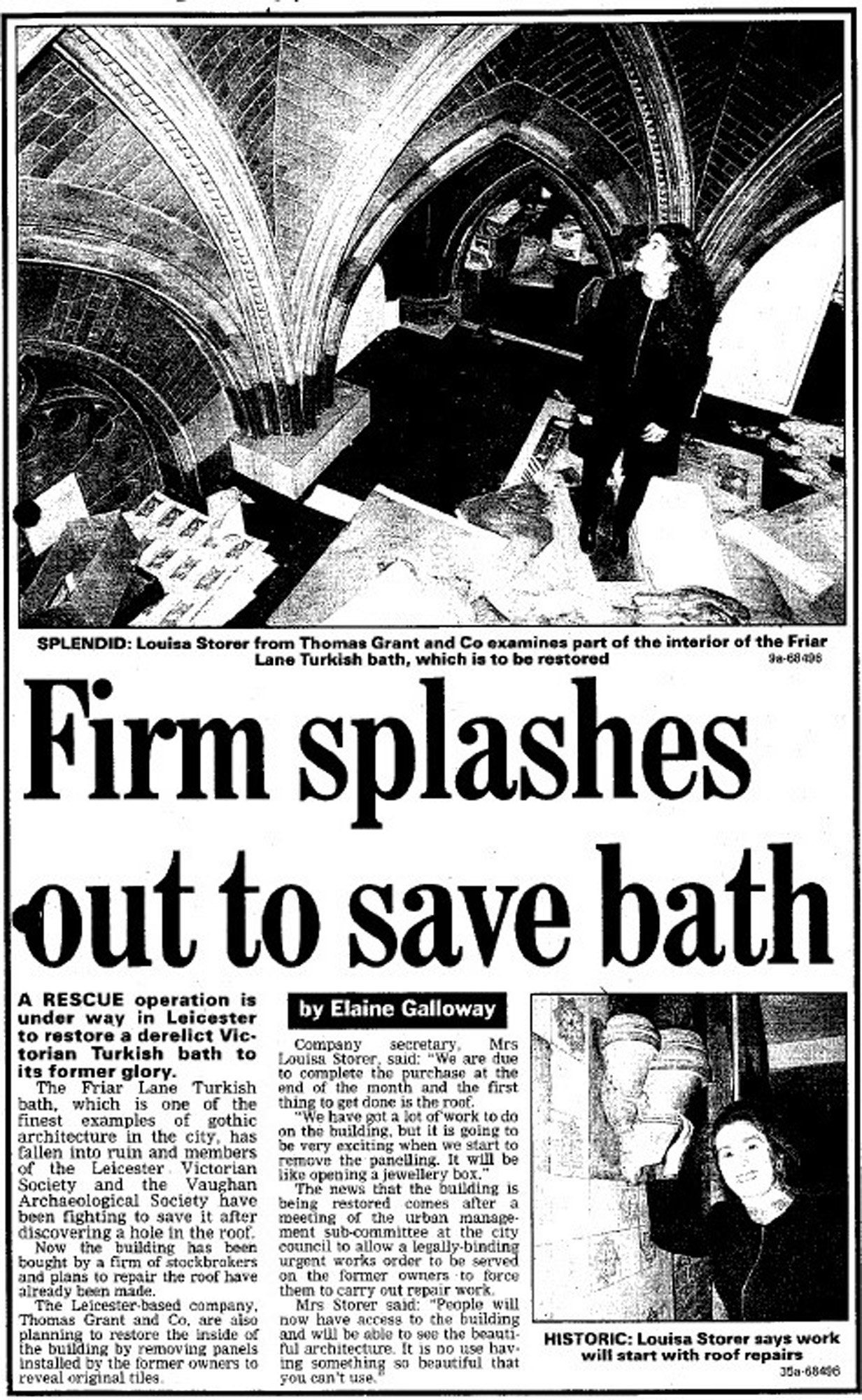
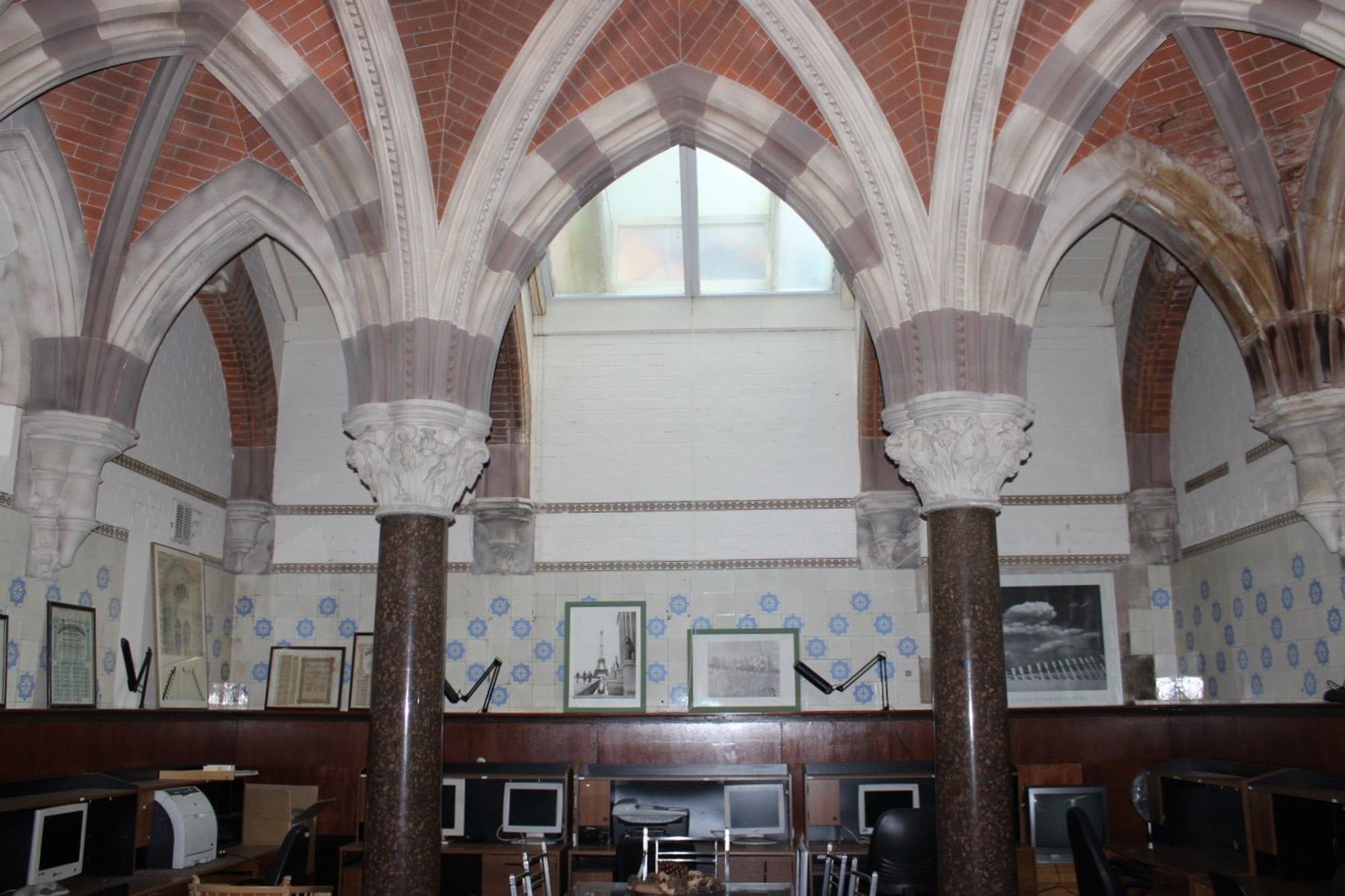
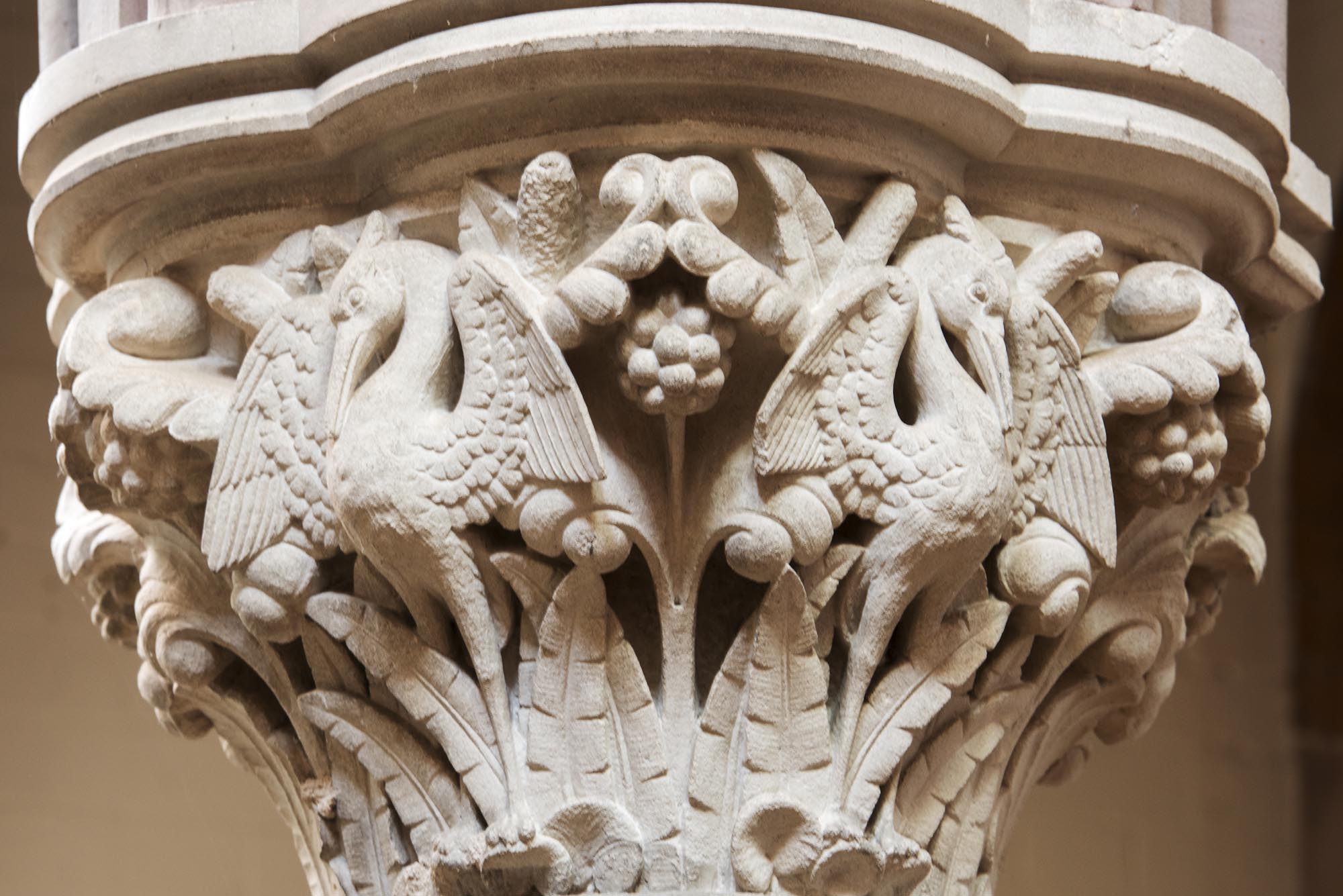
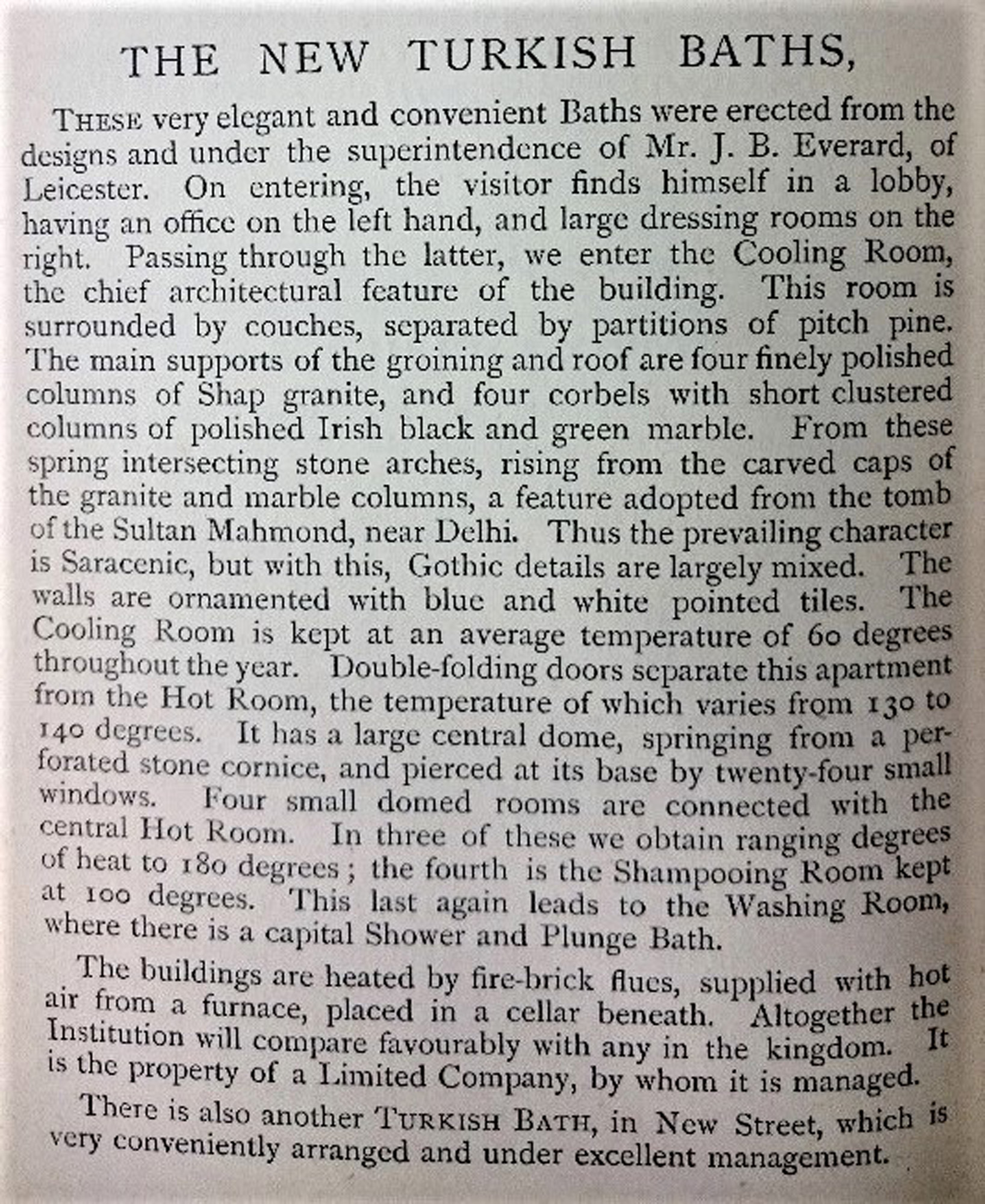
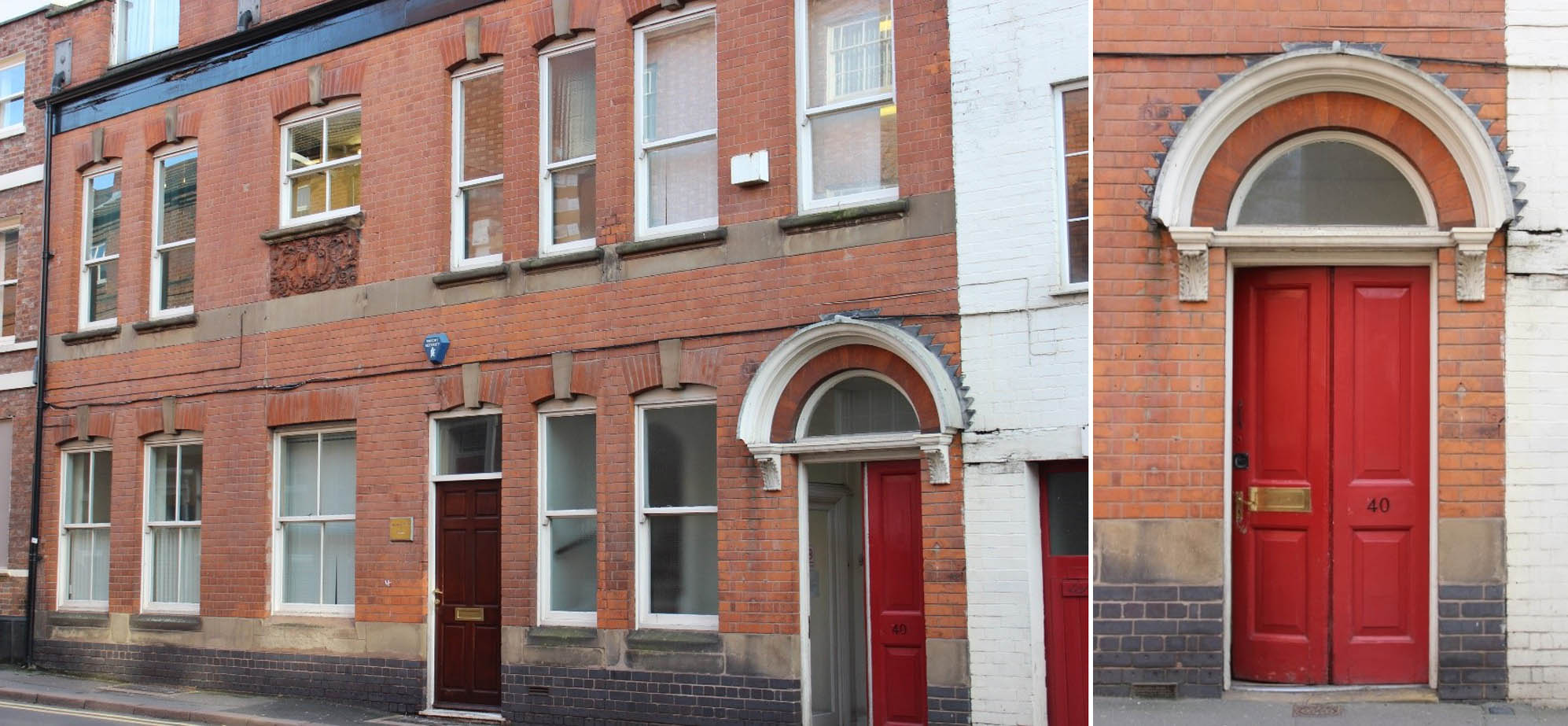
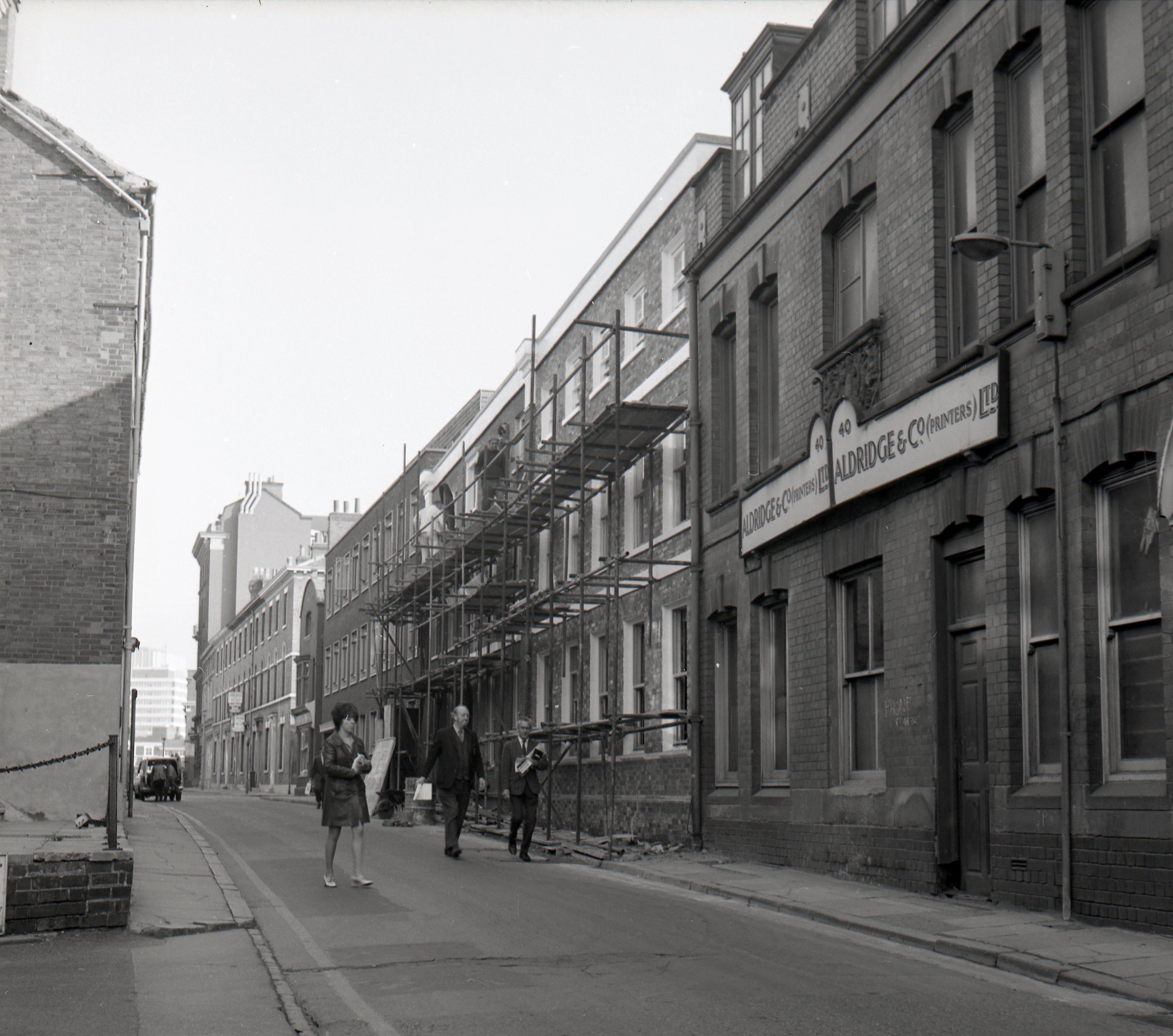
Leisure & Entertainment
Roman Leicester
(47- 500) A military fort was erected, attracting traders and a growing civilian community to Leicester (known as Ratae Corieltauvorum to the Romans). The town steadily grew throughout the reign of the Romans.
Medieval Leicester
(500 – 1500) The early years of this period was one of unrest with Saxon, Danes and Norman invaders having their influences over the town. Later, of course, came Richard III and the final battle of the Wars of the Roses was fought on Leicester’s doorstep.
-
The Castle Motte1068

-
Leicester Cathedral1086

-
St Mary de Castro1107

-
Leicester Abbey1138

-
Leicester Castle1150

-
Grey Friars1231

-
The Streets of Medieval Leicester1265

-
Leicester Market1298

-
Trinity Hospital and Chapel1330

-
Bow Bridgecirca 1350

-
Church of the Annunciation1353

-
John O’Gaunt’s Cellar1361

-
St John's Stone1381

-
Leicester Guildhall1390

-
The Magazine1400

-
The Blue Boar Inn1400

-
The High Cross1577

Tudor & Stuart Leicester
(1500 – 1700) The wool trade flourished in Leicester with one local, a former mayor named William Wigston, making his fortune. During the English Civil War a bloody battle was fought as the forces of King Charles I laid siege to the town.
Georgian Leicester
(1700 – 1837) The knitting industry had really stared to take hold and Leicester was fast becoming the main centre of hosiery manufacture in Britain. This new prosperity was reflected throughout the town with broader, paved streets lined with elegant brick buildings and genteel residences.
-
Great Meeting Unitarian Chapel1708

-
The Globe1720

-
17 Friar Lane1759

-
Black Annis and Dane Hills1764

-
Leicester Royal Infirmary1771

-
New Walk1785

-
Freemasons’ Hall1790

-
Gaols in the City1791

-
Friars Mill1794

-
City Rooms1800

-
Development of Highfields1800

-
Wesleyan Chapel1815

-
20 Glebe Street1820

-
Charles Street Baptist Chapel1830

-
Glenfield Tunnel1832

-
James Cook1832

Victorian Leicester
(1837 – 1901) The industrial revolution had a huge effect on Leicester resulting in the population growing from 40,000 to 212,000 during this period. Many of Leicester's most iconic buildings were erected during this time as wealthy Victorians made their mark on the town.
-
Leicester Union Workhouse1839

-
Campbell Street and London Road Railway Stations1840

-
The Vulcan Works1842

-
Belvoir Street Chapel1845

-
Welford Road Cemetery1849

-
Leicester Museum & Art Gallery1849

-
King Street1850

-
Cook’s Temperance Hall & Hotel1853

-
Amos Sherriff1856

-
Weighbridge Toll Collector’s House1860

-
4 Belmont Villas1862

-
Top Hat Terrace1864

-
Corah and Sons - St Margaret's Works1865

-
Kirby & West Dairy1865

-
The Clock Tower1868

-
Wimbledon Works1870

-
The Leicestershire Banking Company1871

-
St Mark’s Church and School1872

-
Victorian Turkish Baths1872

-
The Town Hall1876

-
Central Fire Stations1876

-
Aylestone Road Gas Works and Gas Museum1879

-
Gas Workers Cottages1879

-
Leicestershire County Cricket Club1879

-
Welford Road Tigers Rugby Club1880

-
Secular Hall1881

-
Development of Highfields1800

-
Abbey Park1881

-
Abbey Park Buildings1881

-
Victoria Park and Lutyens War Memorial1883

-
Leicester Fosse FC 18841884

-
Leicester Coffee and Cocoa Company Coffee Houses1885

-
St Barnabas Church and Vicarage1886

-
Abbey Pumping Station1891

-
Luke Turner & Co. Ltd.1893

-
West Bridge Station1893

-
Thomas Cook Building1894

-
The White House1896

-
Alexandra House1897

-
Leicester Boys Club1897

-
Grand Hotel and General Newsroom1898

-
Highfield Street Synagogue1898

-
Western Park1899

-
Asfordby Street Police Station1899

-
Leicester Central Railway Station1899

Edwardian Leicester
(1901 – 1910) Electric trams came to the streets of Leicester and increased literacy among the citizens led to many becoming politicised. The famous 1905 ‘March of the Unemployed to London’ left from Leicester market when 30,000 people came to witness the historic event.
-
YMCA Building1900

-
The Palace Theatre1901

-
Pares's Bank1901

-
Coronation Buildings1902

-
Halfords1902

-
High Street1904

-
George Biddles and Leicester's Boxing Heritage1904

-
Municipal Library1905

-
Leicester Boys Club1897

-
The Marquis Wellington1907

-
Guild Hall Colton Street1909

-
Women's Social and Political Union Shop1910

-
Turkey Café1901

Early 20th Century Leicester
(1910 – 1973) The diverse industrial base meant Leicester was able to cope with the economic challenges of the 1920s and 1930s. New light engineering businesses, such as typewriter and scientific instrument making, complemented the more traditional industries of hosiery and footwear manufacturing.
-
Dryad Handicrafts1912

-
De Montfort Hall1913

-
Leicester During the First World War1914

-
Fox’s Glacier Mints1918

-
Statue of Liberty1919

-
Housing in Saffron Lane1924

-
Winstanley House1925

-
Housing in North Braunstone1926

-
Lancaster Road Fire Station1927

-
The Little Theatre1930

-
Saffron Hill Cemetery1931

-
Braunstone Hall Junior School1932

-
Former City Police Headquarters1933

-
Savoy Cinema1937

-
Eliane Sophie Plewman1937
-
City Hall1938

-
Athena - The Odeon Cinema1938

-
The Blitz in Highfields1940

-
Freeman, Hardy and Willis - Leicester Blitz1940

-
Leicester Airport1942

-
Leicester’s Windrush Generations1948

-
Netherhall Estate1950
-
Housing at Eyres Monsell1951

-
Silver Street and The Lanes1960

-
Bostik1960

-
Auto-Magic Car Park (Lee Circle)1961

-
University of Leicester Engineering Building1963

-
Sue Townsend Theatre1963

-
Central Mosque1968

-
Belgrave Flyover1973

Modern Leicester
(1973 – present day) Industry was still thriving in the city during the 1970s, with the work opportunities attracting many immigrants from all over the world. While industry has declined in recent years, excellent transport links have made Leicester an attractive centre for many businesses. The City now has much to be proud of including its sporting achievements and the richness of its cultural heritage and diversity.
-
Haymarket Theatre1973

-
The Golden Mile1974

-
Acting Up Against AIDS1976

-
Belgrave Neighbourhood Centre1977

-
Diwali in Leicester1983

-
Leicester Caribbean Carnival1985

-
Samworth Brothers1986

-
Jain Centre1988

-
Guru Nanak Dev Ji Gurdwara1989

-
King Power Stadium2002

-
LCB Depot2004

-
Curve2008

-
BAPS Shri Swaminarayan Mandir2011

-
Makers Yard2012

-
VJ Day 80th Anniversary2020

- Roman Leicester
- Medieval Leicester
- Tudor & Stuart Leicester
- Georgian Leicester
- Victorian Leicester
- Edwardian Leicester
- Early 20th Century Leicester
- Modern Leicester
















































































































































